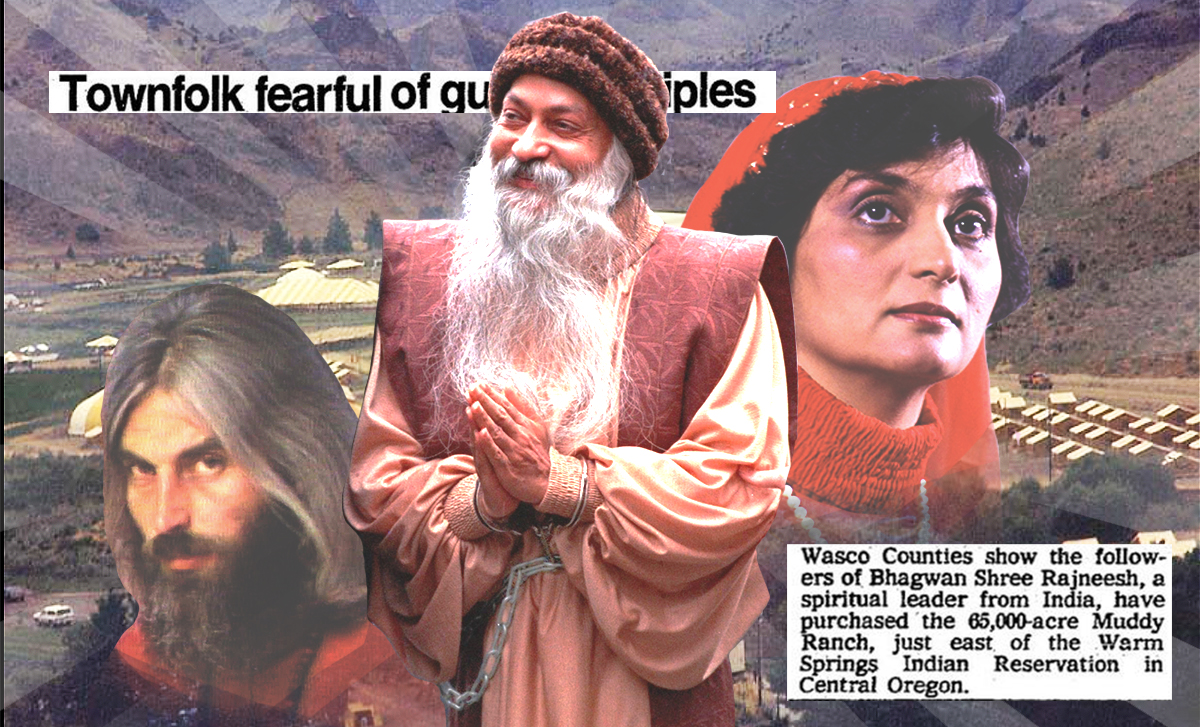
“Wild Wild Country” is Netflix’s latest riveting documentary, which chronicles the tempestuous and quickly forgotten events surrounding a cult that carried out one of the only successful bioterrorist attacks in the United States. It depicts a landscape that is as complex as it is contentious, replete with dangerously intelligent and uncompromising individuals who drove the events to their disastrous conclusion. “Wild Wild Country” has no narration, relying upon the interviewed to provide the story’s course. It is beautifully composed, with dark modern footage betraying the sinister undercurrents that permeated the cult and the people that fell into its crosshairs thirty years ago. At the same time, it allows members of the cult to argue their case, as they contend that they were victims too.
These events, as explosive as they became, started innocently. In 1981, a plot of land in Oregon was purchased by the followers of the spiritual teacher Bhagwan Shree Rajneesh (commonly referred to as the Bhagwan) in order to establish what was ostensibly a farming community. What followed was four years of conflict, crime, and religious fervor between the Bhagwan’s community (called Rajneeshpuram) and the nearby town of Antelope. And it all began with a zoning permit dispute.
To the locals of quiet Antelope, their town was a reward for the lower middle-class families that had spent their entire lives working in order to retire on a fixed income. So, when a spiritual community purchased Big Muddy Ranch (about 65,000 acres of land) with the intent to establish farmland, the citizens of Antelope paid it no mind. Months later, planes and helicopters carrying building materials and trucks full of orange-robed people began to arrive, bringing a host of concerns and a great deal of confusion with them. What had been advertised as a small farming community eventually grew into a planned city with a population of 50,000. The town was complete with infrastructure including a fire station, police, malls, restaurants, casinos, an airport, and suburban living quarters. When the local government received the complaints from the town of Antelope, they embroiled Rajneeshpuram in a land-use dispute that lasted until well after the town itself fell apart. In the meantime, believing that Antelope sought the end of the commune, the Bhagwan’s followers began steadily taking over the town, eventually renaming it Rajneesh after voting themselves onto the city council and purchasing swathes of land on the interior of the town.
After consolidating themselves within the town, the Bhagwan’s followers began plans and activities pursuant to the eventual expansion of the movement into the rest of Wasco County, dominating it physically and politically. These include gathering homeless US residents and giving them food and a home as long as they promised to vote in their favor in an upcoming election. When this plan failed, Rajneeshpuram exiled many of the homeless, abandoning them in Oregon when many were originally from areas elsewhere in the Midwest. Days before the election, an outbreak of Salmonella incapacitated nearly 800 citizens of Wasco County. Later, the strain was identified as originating from a science lab in Rajneeshpuram, making this the first and largest bioterrorist attack in the United States. The events surrounding the election were what drove the legal cases against the leaders of the group, eventually bringing about the end of the commune in Oregon.
“Wild Wild Country” is a tangled web of religious and governmental overreach, boiling tempers, and subterfuge that must be seen to be believed. Over 300 hours of media footage was processed in the making of this documentary in an effort to grant both sides of the conflict a chance to make their case. Thirty years after these events, many of the powerful players in this war are still around to offer their insights and personal opinions in interviews that reveal the personalities behind the cause. What went down in history as a black and white legal dispute — and then subsequently forgotten as such — is unearthed again as a deeply complicated and profoundly interesting study of the law and how people on both sides of a dispute can use it as a tool, for better or for worse.
At its core, “Wild, Wild Country” is the truest form of documentary. It is without opinion, without condemnations, without an obvious narrative lens through which the audience views the case. While there were two obvious sides to the conflict, there was no true protagonist to this story. There is not supposed to be one. The purpose is to inform without bias and allow the audience to draw their own conclusions. In this modern political environment, “Wild, Wild, Country” stands as a chilling reminder of the strength of the law and the dangers of blind compliance.







